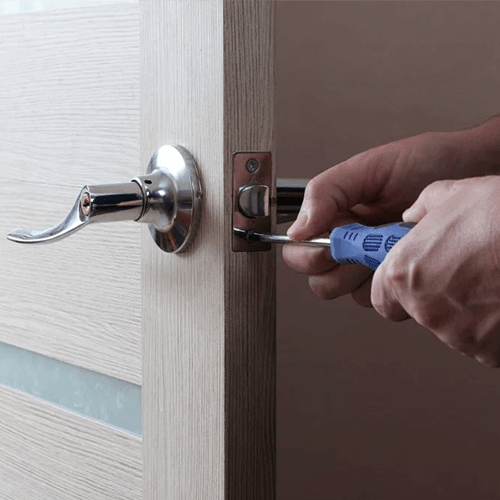
Commercial doors are an important part of your workplace or business. They maintain security, ensure access, and contribute to the aesthetics of the property.
When you have a newly installed commercial door, you shouldn’t have any problems due to wear or tear. If your door isn’t opening or closing properly or is showing other issues, run through this checklist to find out what may be wrong.
Commercial doors, whether steel or wood, can be very heavy. This means they require the right pivots and hinges to ensure that they can open and close reliably. A damaged hinge can impede opening or cause the door to hang crooked, potentially damaging the door and other hardware.
Installing the wrong size hinges can often lead to hinges becoming damaged. The National Fire Protection Association provides a very clear guide for which types and sizes of doors should have which size hinges. The number of hinges required is defined by the height of a door, and the type of hinges is determined by the width and weight.
Check to see if the hinges appear bent. Using insufficient hinges could lead to bending, as could attempting to force a jammed door. In either case, you’ll have to replace the hinges and make sure to use the right type.
Ensure that the hinges are properly attached to both the door frame and the door. They could be installed incorrectly, leading to problems closing or opening the door. The frame may also be the wrong configuration for the hinges, causing them to stick out too far and making the door hard to close.
If you’re having problems with a brand-new door, chances are that the issue is actually with the door hardware. Commercial doors can have many different types of hardware, including lever sets, exit devices for fire doors, push/pull plates, deadbolts, door stops, weather strips, mortise lock sets, and more.
Making sure that these components are functioning correctly should be one of the first things you check. If a door doesn’t close properly, check each hardware element to see if it is physically blocking the door. Improperly installed or incorrectly sized components can easily cause this to happen.
If you’re having trouble opening or closing the door, check the lever or locks. Attempt to use the lever and lock mechanisms when the door is open to visually inspect whether they’re working. If a deadbolt extends outside the door when unlocked or a lever fails to open, consider repairing or replacing it for proper function.
If the components aren’t sized and configured for your specific door, they can cause all kinds of problems. It’s best to purchase these elements together or to work with a professional door supplier to get exactly what you’re looking for.
It’s not uncommon for commercial doors to have some type of threshold. Of course, exterior doors will have their own dedicated thresholds and weatherstripping. However, interior doors with thresholds can also cause issues if you do not account for them.
If your door is being installed at a point where two types of flooring meet, you need to take the threshold into account during sizing. If you don’t, you could find that your door is too tall and doesn’t fit. It can scrape against the threshold and cause continuous wear or become jammed.
Door closers are an important requirement of the Americans with Disabilities Act and other regulatory codes. However, they can cause some trouble if not set properly. You must carefully adjust door closers to match the weight and desired closing speed of your door.
If you’re having trouble with closing or opening the door, adjusting the door closer could be your solution. Read the instructions for the door closer carefully. In most cases, there are several adjustment screws underneath the cover.
Choosing the right components is the best way to make sure your door works as intended. You can get a quote from CDF Distributors for all of your commercial door and door hardware needs.